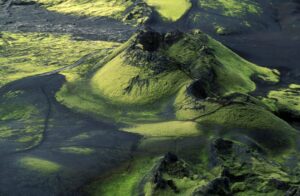This earthquake of magnitude 9.5 hit an area of Chile close to Concepcion, two hundred miles south of the country’s capital of Santiago. There was a death toll of 5,000 people.
On May 22, 1960, an earthquake of magnitude 9.5, the largest earthquake ever instrumentally recorded and the twentieth century’s most powerful quake, shook southern Chile near Concepcion, two hundred miles south of the capital Santiago. A 750-mile stretch of the fault line involved was ruptured and extensive destruction followed to both human life and property. There were aftershocks, as many as a dozen of magnitude 6 or higher. There was also a tsunami. It was estimated that more than 5,000 people lost their lives, 3,000 were injured, and damage costs amounted to more than $400 million. The tsunami was destructive along the coast of Chile and it also caused numerous casualties and property damage in other places around the Pacific Ocean.
The Pacific Rim, often known as the Ring of Fire because so many of the world’s greatest earthquakes occur there, experienced the world’s most powerful earthquakes, those of magnitude 9 or greater, between 1950 and 2005: Chile 1960, 9.5; Alaska 1964, 9.2; Sumatra 2004, 9.1; and Kamchatka 1952, 9.0. The places where all of these huge quakes struck were subduction zones; that is, places where huge tectonic plates are constantly moving beneath other tectonic plates. From time to time, as they move, an obstruction of some kind stops plate movements and tensions build up. Later, when the plates snap free from the obstruction, the release of energy causes the earthquake.
The location where the ocean plate subducts beneath the continental one in Chile is some distance offshore; hence, the epicenter of the quake was there. The land area north of Concepcion rose three feet as a result of the earthquake and land south of it was pushed up in elevation by five feet. These were indications of the dislocations that occurred in the ocean depth at the epicenter, dislocations that created a tsunami. Concepcion soon discovered the power of that tsunami when a twenty-foot wave swept ashore, damaging or destroying half a million homes.
We are fortunate to have an account of what it is like to experience a major earthquake in Chile. The account comes from a famous scientist who happened to be in Concepcion when another big earthquake struck that city in 1835. Charles Darwin was sailing around South America in the Beagle and his ship reached Concepcion on March 4, 1835, a day after a strong earthquake struck. It was not as strong as the 1960 quake, but the damage it caused appeared from Darwin’s reports to be just as great.
Darwin was told that seventy villages had been completely destroyed by the earthquake and the big ocean wave that followed it. As he looked around and saw heaps of bits of furniture and wood he thought it looked like the wreck of a thousand ships. He could not imagine what it had looked like before the earthquake. Fortunately, the total death toll was less than a hundred. Darwin’s description of the tsunami is particularly interesting. Despite his great ability and achievements, he knew nothing about the forces that create tsunamis because there was nothing understood at that time about tectonic plates and their interactions.
Villagers told him that a small ripple was observed on the surface of the ocean about four miles from shore. It moved quickly toward the shore and as it did so it rose higher and higher until it crashed on to the shore as a twenty-foot-high wave. We know now why the wave rose higher and higher above the general level of the ocean as it approached land but, to the people of Concepcion in 1835, it must have seemed a mystery. The greater mystery in their eyes must have been the subsequent behavior of the tsunami. People told Darwin that after the first wave of the tsunami reached the shore the sea retreated away from the land for some time before returning with a second wave.
This second wave was thirty feet high, ten feet higher than the first one. Again the sea receded from the land, leaving the seabed bare but only to return as it did before with a bigger wave than either the first or second one. There was a fourth retreat from the land and then a final wave, the highest of all. Throughout history, until our understanding of tectonic plates, thousands of people lost their lives during tsunamis by running out on empty beaches after the first wave to catch the stranded fish.
Darwin was also told by the villagers that great flights of sea birds were seen moving toward the mountains away from the sea about an hour before the earthquake struck. It is particularly important for us today to know that this aspect of earthquakes was well known more than 170 years ago. It may have been known much earlier too because occasional accounts like the one that Darwin received do exist. For example, Lisbon was hit with an earthquake of magnitude 9 in 1755. In the archival records of that time there is a description of birds and animals leaving the area before the earthquake struck.
When the great earthquake and tsunami occurred off the coast of Sumatra in 2004, people noted that many forms of wildlife were not affected by the disaster. They had moved away from the danger area before the earthquake struck. Similar stories were told by people in other parts of Asia that had been hit by the tsunami. Japanese research geologists recently proved experimentally that all forms of wildlife do sense impending earthquakes and move away from them. They seem able to respond to warning signals from the environment, signals that we do not receive, and respond accordingly.
In Chile in 1960, along its coast, the tsunami brought forty-foot waves that in some places rose as high as seventy-five feet. Dunes were washed away and sand was transported inland as far as 1,500 feet. In one location where the tsunami reached forty-five feet a thin layer of sand was found six miles inland. Over the twenty-four hours that followed the earthquake places all around the Pacific Rim felt the tsunami. It reached Alaska after eighteen hours, Japan after twenty-two hours, and Hawaii after fifteen hours with a wave height of ten feet, rising at times to thirty feet. This tsunami traveled at speeds of four hundred–five hundred mph depending on the amount of friction experienced below sea level.
There were three waves in the tsunami, each separated by substantial amounts of time, and the third one did most of the damage to Hawaii. The state was well prepared. Two years after a 1946 tragedy that resulted from a tsunami an elaborate warning system was installed. It included observation posts throughout the Pacific Ocean so that initial indications from tidal gauges could be noted and the information relayed to Hawaii or any other island nation affected. The very moment that a seismic disturbance severe enough to cause a tsunami is now observed anywhere in the Pacific Basin it is recorded at the Honolulu Observatory. Epicenter location and times of arrival at affected shores are estimated and warnings passed on. Other nations supplement this information. The Japanese Meteorological Agency for instance has five tsunami forecast centers and these also give advance warnings.
Unfortunately, a change in the way the Hawaiian warning signal was broadcast by radio left islanders puzzled. A decision had been made to move from a three-stage signal to a single-stage signal, but many people had forgotten about the change and so they waited for a second and third siren before acting. This led to a much smaller number than local recommendations required of people evacuating from dangerous shore areas. As in 1946, the town of Hilo on Big Island suffered more severely than anywhere. Other islands experienced only moderate damage. At Hilo Bay, the highest wave towered more than thirty feet above normal sea level and raced inland at 30 mph. Boulders as heavy as twenty tons were picked up from the bay front seawall and carried five hundred feet across a park without leaving a mark on the grass.
Two-inch diameter pipes supporting parking meters were bent over parallel to the ground. Entire city blocks were swept clean, buildings being wrenched from their foundations and deposited as piles of debris three hundred feet away. Over five hundred buildings representing $25 million of value were destroyed. At Hilo alone sixty-one people were crushed or drowned by the waves and an additional forty-three required hospitalization.





















